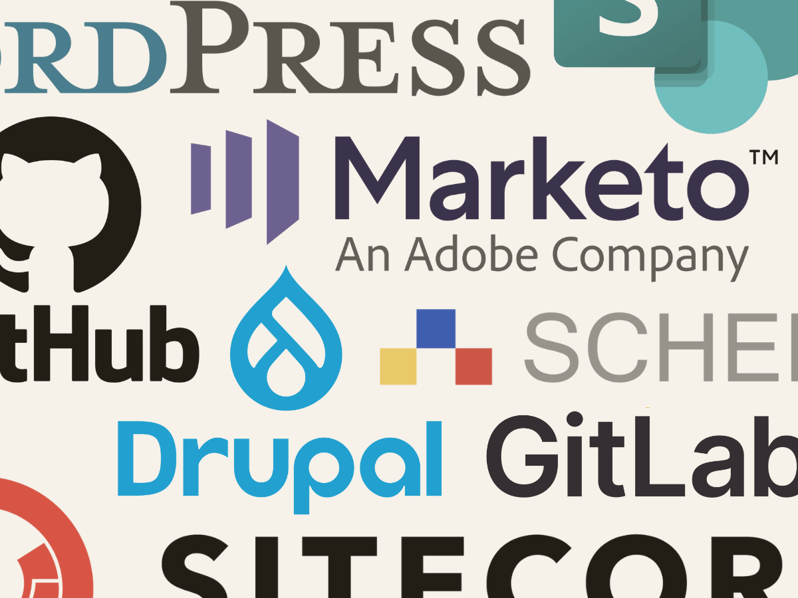
Automating processes is a key strategy for significantly reducing the time and money needed to produce high-quality translations. Translation interfaces and workflows tailored to meet your requirements make these processes lean, efficient and seamless – here’s a quick overview of the various options, depending on the system you use.
Every department at every business probably has them: inconvenient, time-consuming manual jobs which, frustratingly, need to be done again and again, and which all too often cause delays for staff in their everyday work and get on their nerves. And translation management is no exception. Whether it’s copying text to be translated from one system and then copying it back in later on, or sending files via e-mail or the customer portal (which first involves finding everything, putting it together and uploading it), there are lots of tasks that take up a large amount of time.
Automation in the translation process
The good news is that there’s a solution: automation. These smart systems give you time for the jobs that matter, so you don’t have to spend hours copying and pasting text, checking which translations have already been done etc. – it’s all done for you. Essentially, all you need to do is press a button, and soon afterwards the translation you want will be back in your system.
Which interfaces and automation solutions are there?
An interface is effectively your hotline to your translation agency. Whichever system you use, they can connect securely to all relevant authoring, PIM and content management systems, sourcing platforms and specific company systems. Below is a summary of the most common systems, plus a short description of what an interface solution could look like.
WordPress and Drupal
Plug-ins for the popular WordPress and Drupal content management systems can be used, which make it as simple as possible for you to send content for translation from the interface you’re familiar with – and you can “pick it up” from there too.
Microsoft SharePoint and Marketo
It’s better to use smart technology than to copy text manually from Microsoft SharePoint or Marketo. Web apps don’t require any installation, and a few clicks is all it takes to send content to be translated to the translation platform.
SCHEMA ST4 / COTI interfaces
COTI (Common Translation Interface) is a standard for data transfer between authoring systems and translation platforms. A COTI interface offers various levels of automation in translation. At level 2, data are transferred automatically via special exchange folders. The folders are permanently monitored, and as soon as COTI packages are saved there, the next stage in the translation process begins automatically. COTI is supported by SCHEMA ST4 and other authoring systems.
GitHub, GitLab and Microsoft Azure DevOps
Systems such as GitHub, GitLab and Microsoft Azure DevOps use the Git open-source technology for versioning. A Git interface can connect to all these platforms, allowing new content to be detected automatically. Not only is a Git interface an agile solution for translating software texts – it’s also ideal for MadCap Flare or Help & Manual projects, FrameMaker files and any other text-based formats (XML, HTML and XLIFF).
TYPO3 and Sitecore
Platforms like TYPO3 and Sitecore allow you to export content for translation in XML format and to import it back in when the translation is ready. Monitored folders automate the process.
Customized translation interfaces
If your business uses a different system, or if one of systems mentioned above has been specially customized, interfaces can be programmed to work with this system too. Whether it’s through plug-ins, API connectors or Hot Folders, localization engineers will create the perfect interface for you. Your agency will be happy to help, and can show you the potential solutions.
How you benefit from intelligent interfaces in the translation process
Interfaces and the associated workflows, tailored to suit your needs, hugely minimize the manual workload for everyday jobs, so you can focus on what really matters. Agile interfaces make the process as smooth as possible and reduce what you pay – especially if you regularly have large translation projects. And you get the translated texts back in the right format too.
Benefits of an interface (different systems vary):
- Save time and money by eliminating tedious routine tasks
- Shorter project lead times – translations can be published sooner
- Order translations straight from the system you use
- Import translations back into your system at the touch of a button
- Lower risk of mistakes (e.g. copy-and-paste errors)
- Easy to use
- No need to adapt the format after translation
- Encrypted data transfer ensures a high level of security
- Interfaces can be customized
Automation is a way to make translations faster, seamless and secure, so that your translation management is fit for the future. If you’re interested in an interface solution, get in touch with us! Our experts will listen to you and can explain the various automation options – so you can benefit from this technology as soon as possible.
Main image © MEINRAD


